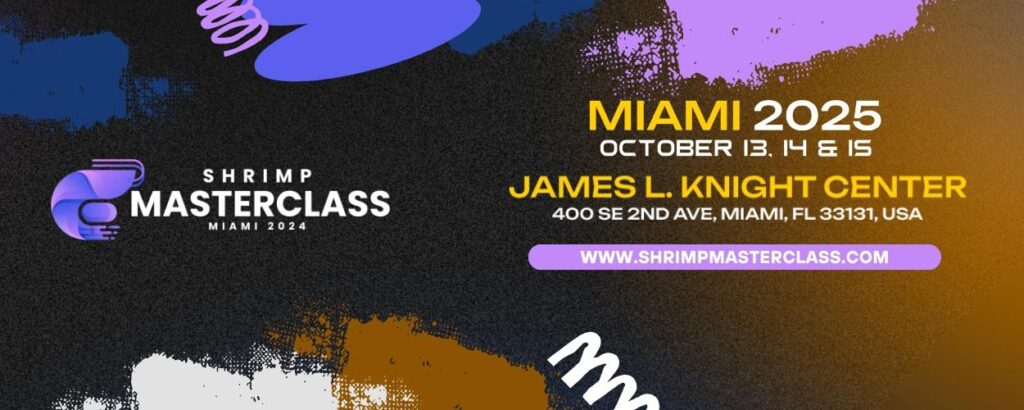Driving Sustainable Seafood Innovation: Key Insights from Aquaculture Africa 2024 in Tunisia
As global demand for sustainably sourced seafood continues to rise, Aquaculture Africa 2024, set against the picturesque backdrop of Tunisia, has emerged as a pivotal gathering for aquaculture experts across the continent. Hosted by the World Aquaculture Society, this annual event highlights groundbreaking techniques and cutting-edge technologies that are reshaping fish farming practices throughout Africa. The recently released highlight video captures the vibrant discussions, expert-led workshops, and essential networking opportunities that defined this year’s conference. From eco-conscious farming methods to advanced scientific breakthroughs, Aquaculture Africa 2024 emphasizes the urgent need for collaboration among researchers, policymakers, and industry leaders to address both challenges and prospects within African aquaculture. Below is an exploration of some of the most significant innovations and insights shared at this influential forum poised to redefine seafood production across Africa and beyond.
Innovations Revolutionizing African Aquafarming
The Tunisian conference spotlighted a range of transformative technologies driving sustainable fisheries development on the continent. A standout innovation was recirculating aquaculture systems (RAS), which significantly cut water usage by recycling water within closed-loop systems while enhancing fish productivity-offering an environmentally responsible alternative to conventional open-water farms.
Another promising advancement featured was biofloc technology, which utilizes beneficial microbial communities to recycle nutrients efficiently. This method improves feed conversion ratios and strengthens disease resistance in farmed species-resulting in reduced operational expenses alongside healthier stock.
The event also underscored emerging trends in smart aquafarming, where Internet of Things (IoT) devices paired with sophisticated data analytics provide continuous monitoring of water quality parameters and fish health status-equipping farmers with real-time insights for precision management.
- Solar-Powered Fish Farming: Harnessing renewable solar energy solutions enables sustainable operations even in off-grid or remote areas.
- Selective Breeding Initiatives: Genetic improvement programs focused on enhancing growth performance and disease resilience among cultured species.
- Integrated Multi-Trophic Aquaculture (IMTA): Co-cultivating multiple aquatic organisms such as finfish alongside shellfish or seaweed creates balanced ecosystems that naturally recycle nutrients while diversifying farm outputs.
| Technology | Description | Main Benefits |
|---|---|---|
| Recirculating Aquaculture Systems (RAS) | Circular water reuse technology minimizing freshwater consumption through filtration & treatment processes. | Saves up to 90% freshwater; lowers environmental footprint; enhances biosecurity measures. |
| Biofloc Technology | Microbial aggregates facilitating nutrient recycling within culture tanks. | Reduces feed costs by ~25%; boosts immunity & growth rates based on trials conducted in Ghana. |
| Smart Farming Solutions | IoT-enabled sensors combined with AI-driven analytics platforms. | Improves operational accuracy; enables early detection of health issues; optimizes resource use. |
| *Recent research shows RAS can increase production efficiency by up to 40% compared with traditional methods.* | ||
| *Biofloc adoption trials across West African nations report feed cost reductions averaging 25%.* | ||
| *Smart aquafarming technologies are expected to grow annually at over 15% rate throughout African farms until 2030.* | ||
Highlights from the World Aquaculture Society’s Feature Video Presentation
The World Aquaculture Society’s newly published highlight reel offers a vivid snapshot capturing transformative strides propelling aquatic food production forward not only within Tunisia but across broader African regions. Several key themes emerged prominently:
- Sophisticated Production Techniques: The integration of precision farming tools simultaneously elevates product quality while promoting environmental sustainability through optimized resource management.
- Cultivating Inclusive Community Partnerships: Prioritizing equitable engagement ensures local communities benefit fairly from sector growth while encouraging responsible stewardship over natural resources.
- Nurturing Collaborative Research Ecosystems: Dynamic alliances between academic institutions, governmental agencies, NGOs, and private sector players accelerate innovation tailored specifically toward regional ecological conditions.
The video further spotlights critical policy frameworks designed to stimulate industry expansion via supportive regulations fostering investor confidence. Below is a summary outlining major policy initiatives introduced or reinforced during discussions:
| Policy Area | Description |
|---|---|
| Sustainability Incentives | A range of financial grants aimed at encouraging adoption of environmentally friendly technologies among aquafarms. (For instance: North African governments collectively allocated $5 million during early 2024 toward subsidies supporting green equipment purchases.) |
| Aquatic Research Funding | |
| Aquatic Research Grants
(A recent example includes $2 million jointly awarded by international donors supporting projects focused on developing alternative sustainable feeds.)
|

